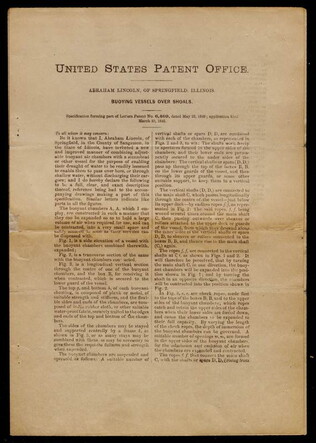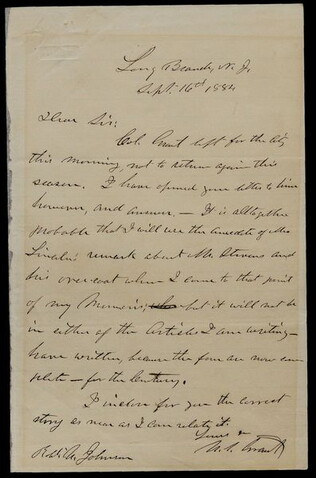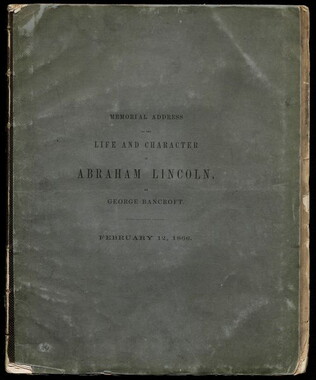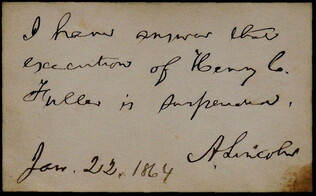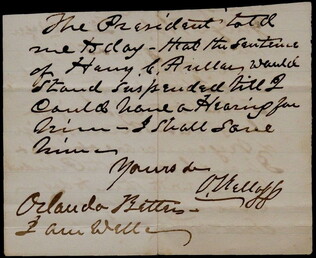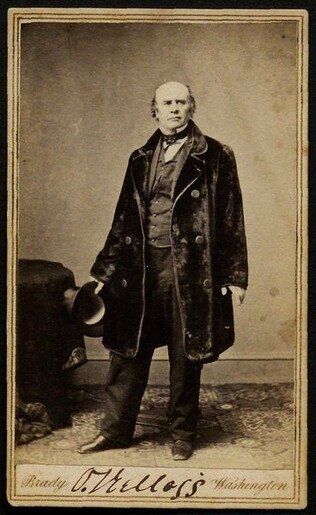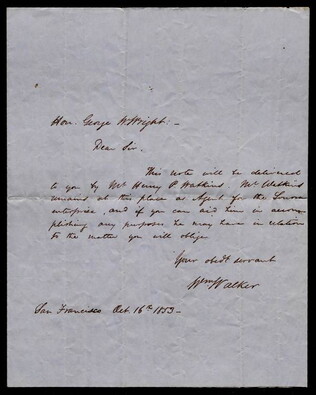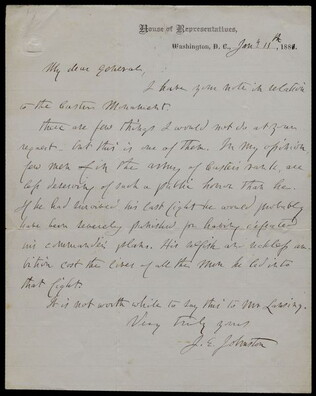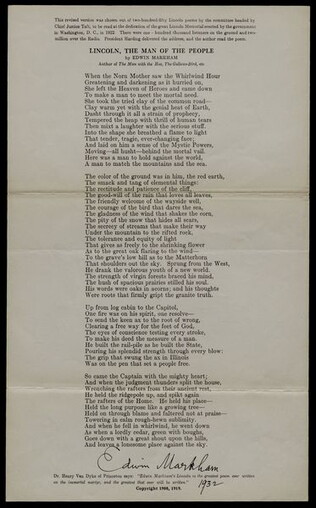22 May 1849
Lincoln, Abraham (1809-1865)
[Patent for Abraham Lincoln's improvement in buoying vessels over shoals]
Patent granted to Lincoln for inventing "a new and improved manner of combining adjustable buoyant air chambers with a steamboat or other vessel for the purpose of enabling their draught of water to be readily lessened to enable them to pass over...
GLC01304
